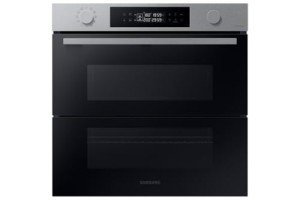10 Ways To Build Your Integrated Hob And Oven Empire
Integrating Cooking: A Comprehensive Guide to Integrated Hobs and Ovens
In the modern-day kitchen, efficiency combines perfectly with design. russell hobbs built under double oven integrated hob and oven system epitomizes this mix, providing both performance and visual appeal. As home cooks look for methods to enhance their cooking areas, understanding the advantages and features of integrated hobs and ovens ends up being necessary. This short article digs into the numerous elements of integrated cooking appliances, providing insights into their advantages, installation factors to consider, and maintenance ideas.
What is an Integrated Hob and Oven?
An integrated hob and oven setup refers to the design in which the cooking hob (the surface area on which pots and pans are put to prepare food) and the oven (the appliance utilized to bake, roast, and broil) are developed to fit flawlessly into kitchen cabinet systems. This cohesive style not just saves space however also improves the visual uniformity of the kitchen.
Key Features of Integrated Hobs and Ovens
- Space Efficiency: These appliances are developed to fit within basic cabinets, enhancing kitchen space while permitting more storage alternatives.
- Elegant Appearance: Integrated designs supply a streamlined, modern-day look that can raise any kitchen's visual.
- Enhanced Functionality: Many integrated systems include innovative functions such as induction cooking, self-cleaning ovens, and smart innovation compatibility.
- Much better Usability: Placing the hob at a proper height and having the oven easily situated listed below can enhance cooking ergonomics.
Advantages of Integrated Hobs and Ovens
The growing preference for integrated hobs and ovens occurs from several associated benefits:
1. Space-Saving Design
- Integrated appliances get rid of the need for large standalone units.
- They permit for more counter area, creating a functional workspace for cooking.
2. Visual Cohesion
- Integrated systems can be ended up to match cabinetry, offering a streamlined and unified appearance.
- The kitchen can keep a minimalist style, devoid of visual clutter.
3. Superior Functionality
- Functions like touch controls, timers, and automated cooking programs can enhance the cooking experience.
- Induction hobs can supply much faster cooking times and more accurate temperature level control compared to standard gas or electric hobs.
4. Energy Efficiency
- Many modern integrated ovens feature improved insulation and energy-efficient features, decreasing energy usage.
- Induction hobs use energy straight in the pots and pans, causing less heat loss and faster cooking.
Installation Considerations
When considering an integrated hob and oven, numerous aspects need to be examined throughout setup.
1. Space Measurements
- Kitchens Layout: Ensure the dimensions of the offered area accommodate both the hob and oven.
- Ventilation: Adequate ventilation is important to avoid overheating and ensure efficient operation, especially with gas models.
2. Electrical and Gas Connections
- Power Supply: Verify that the kitchen's power supply fulfills the device requirements (voltage, amperage).
- Gas Lines: For gas hobs, professional setup may be necessary to guarantee safety.
3. Customization and Finishes
- Pick finishes that complement kitchen interiors, such as stainless-steel, glass, and even custom-made kitchen cabinetry to conceal the appliances.
4. Availability
- Ensure that both the hob and oven are easily reachable. An ergonomic setup will enhance the cooking experience and make it safer.
Integrated Hob and Oven Models
Model
Type
Secret Features
Rate Range
Bosch Series 4 HBG634BBR
Built-In
Wi-Fi connection, multiple cooking modes
₤ 1,200 – ₤ 1,500
Samsung NZ48K7570UG
Induction
Flex zone, clever innovation, touch controls
₤ 1,500 – ₤ 2,000
Miele H 6260 BP
Built-In
Self-cleaning, automatic programs, smooth style
₤ 2,500 – ₤ 3,500
NEFF B57VR22N0
Multifunction
Slide&& Hide door, advanced heat circulation
₤ 2,000 – ₤ 2,500
Upkeep Tips
To take full advantage of the life and performance of integrated hobs and ovens, proper maintenance is essential:
- Regular Cleaning: Clean the hob and oven frequently to avoid buildup from spills and food residues. Use non-abrasive cleaners to safeguard surface areas.
- Inspect Seals and Gaskets: Check oven door seals to guarantee effective heating and avoid energy loss.
- Look for Damage: Regularly inspect gas tubes, electrical cable televisions, and connections for wear or damage. Immediate repair work or replacement is crucial for safety.
- Follow Manufacturer's Guidelines: Adhere to the particular upkeep directions supplied by the producer for optimal performance.
FAQs
1. Can I install an integrated hob and oven myself?
- While some property owners go with DIY setup, it is recommended to work with a professional, particularly when gas connections or electrical wiring are involved.
2. Are integrated hobs and ovens energy-efficient?
- Lots of contemporary integrated systems are developed with energy efficiency in mind, including thermal insulation and energy-saving modes.
3. What is the very best material for an integrated hob and oven?
- Stainless steel is popular due to its resilience, ease of cleansing, and resistance to rust. Nevertheless, glass ceramic and enamel-coated options likewise provide visual appeal.
4. How do I troubleshoot common issues with integrated hobs and ovens?
- Describe the user handbook for fixing guidelines. Fundamental issues like power failures or irregular cooking may often be dealt with through simple adjustments or resets.
An integrated hob and oven system uses a mix of functionality and style that aligns with contemporary kitchen styles. By understanding the advantages, installation requirements, and maintenance pointers connected with these appliances, homeowners can make educated decisions that enhance their cooking experiences. As kitchen areas develop into multifunctional areas, integrated cooking solutions will continue to gain appeal, forming the future of cooking areas.
